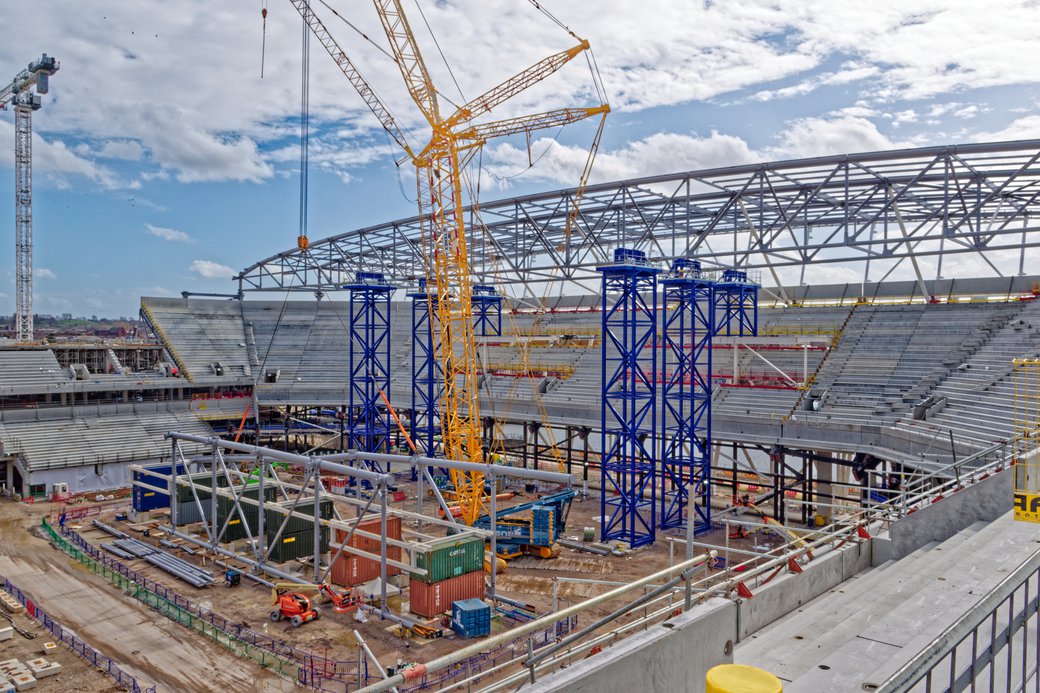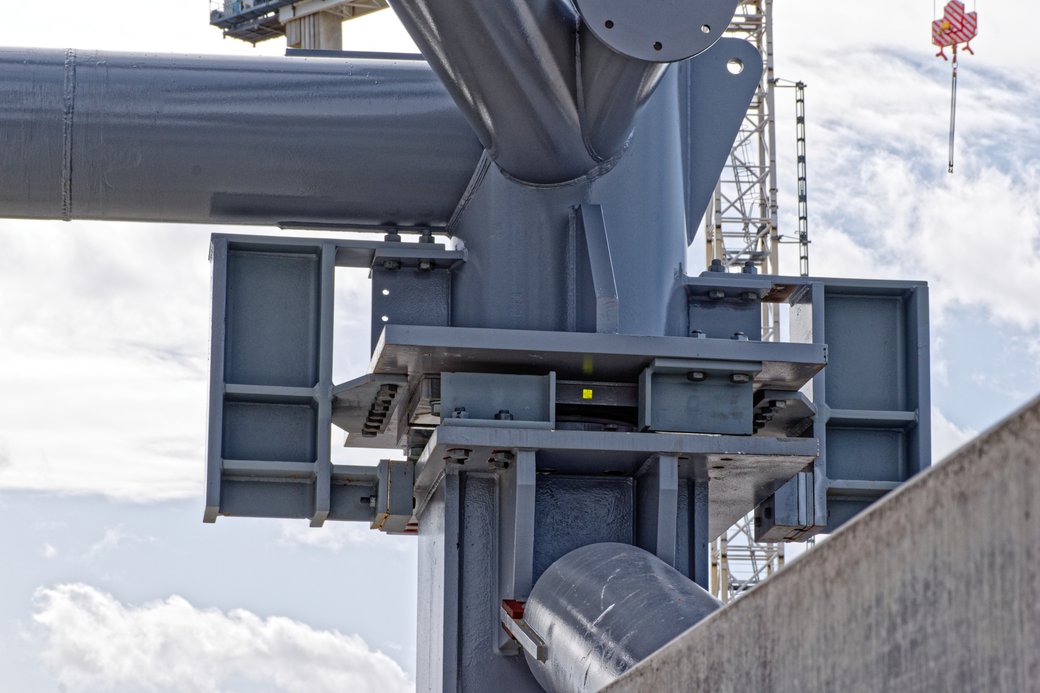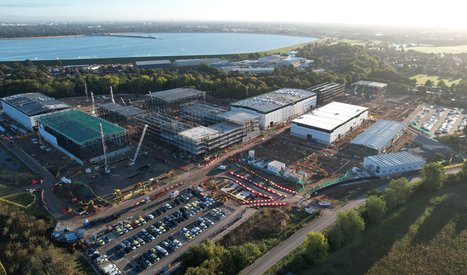Severfield is assisting with the construction of Everton Football Club's new 52,888-capacity stadium located at Bramley Moore Dock. The stadium will be Everton F.C.s new home and is set to open in the 2024-25 season, replacing Goodison Park.
- Location
- Bramley Moore Dock, Liverpool
- Client
- Everton FC
- Main Contractor
- Laing O'Rourke
- Engineer
- Buro Happold Ltd
- Architect
- BDP Pattern
- Tonnage
- 12,200
Severfield is responsible for the design of steel-to-steel connections and for supplying and erecting 12,200 tonnes of structural steelwork –1,500 tonnes of which is recycled steel – the full amount of which comprises the bowl (terracing) and roof for Everton Football Stadium. The project scope also includes the installation of free-issue concrete lattice planks, which when combined with steel make up the floors of the terraces, as well as free-issue concrete terracing units which make up the seating.

The north and south roofs comprise five long-span trusses – two in the north and three in the south – each measuring 170 metres long and weighing an impressive 200 tonnes! Due to the sheer size of each steel truss, each had to be split into three sections measuring typically 60 – 70 metres long. During the erection stage, each section was supported on temporary trestle towers spanning between structural bearings. Rafters and purlins were also pre-assembled on the pitch to create panels that were resultantly cladded at ground level. Once the respective stand is complete, the trestles, previously used for erection, will be used to de-jack the pre-set roof the structure in stages, that is, until the load is released from the trestles and the design deflection is realised.
The location of the new ground is the most prominent feature of this project. Prior to construction, the dock on which the stadium is now built was full of water, and the retaining walls were grade II listed – that was one factor among other challenging heritage features. To maintain the flow of water to the city's canal system, the dock had to be filled with layers of sand to safeguard the listed walls. This ingenious design means that should the need ever arise, the dock can be returned to its original state. Adding to some of the challenges, high wind speeds and element exposure are both part-and-parcel of being located on a dock. However, due to Severfield’s knowledge and expertise, compliance was achieved through precise modelling and simulation.
Everyone involved in this project has played a key role in its success, achieving every programme target and milestone set, and taking great pride in the delivery of this complex and technical project – all with safety at the forefront.




